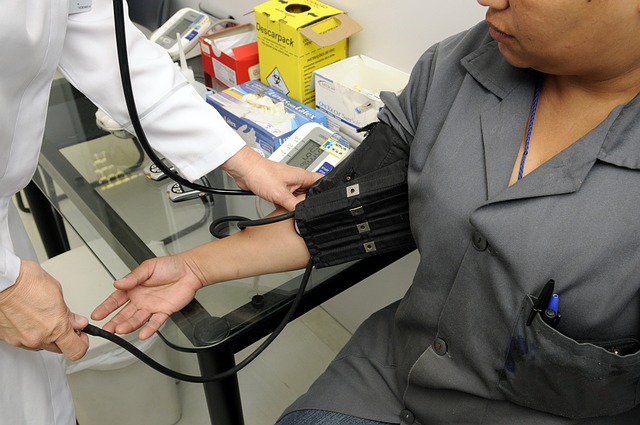Digital tomosynthesis (DT) is a 3D medical imaging technology that enhances anomaly detection by creating detailed reconstructions from multiple low-dose images, improving diagnostic accuracy over traditional 2D methods, particularly in identifying small abnormalities like lung nodules or early breast cancer signs. DT's 3D data allows radiologists to navigate through various anatomical planes, enhancing patient outcomes in crucial areas such as pulmonology and mammography by reducing misdiagnosis risks and aiding treatment planning.
“Unleash the power of hidden detail with 3D imaging—a game-changer in diagnostic accuracy. This article explores how advanced technologies, such as digital tomosynthesis (DT), are revolutionizing radiology. By unveiling previously unseen anomalies and enhancing visualization, DT improves diagnosis. We delve into its impact on overcoming limitations, from complex cases to subtle findings, ultimately fostering better patient care. Get ready to navigate the future of radiology, where 3D imaging is transforming the way we perceive and understand medical conditions.”
Unveiling Hidden Anomalies: Digital Tomosynthesis Power
Digital tomosynthesis, a groundbreaking technology in medical imaging, offers a transformative approach to detecting and diagnosing hidden anomalies within the human body. Unlike traditional 2D imaging methods that provide limited views, this advanced technique creates a three-dimensional reconstruction of internal structures. By capturing multiple low-dose images from different angles, digital tomosynthesis constructs an intricate layer-by-layer view, revealing details often obscured in standard radiographs.
This innovative process is particularly powerful in identifying subtle abnormalities, such as small lung nodules or early signs of disease in dense breast tissue. The 3D nature of the data allows radiologists to navigate through various planes, enabling a more comprehensive assessment and enhancing diagnostic accuracy. As a result, digital tomosynthesis plays a pivotal role in improving patient outcomes, especially in fields like pulmonology and mammography, where early detection is crucial.
Enhancing Visualization: 3D Imaging's Impact on Diagnosis
3D imaging technologies, such as digital tomosynthesis (DT), significantly enhance visualization in medical diagnostics. Unlike traditional 2D imaging methods that produce flat, static images, DT captures a series of low-dose X-ray images from multiple angles. These images are then reconstructed into a three-dimensional model, offering doctors a more comprehensive and detailed view of the body’s internal structures. This dimensional perspective is particularly valuable in areas like breast cancer detection, where subtle abnormalities can be better identified and localized.
By providing an accurate, multi-faceted representation of anatomical features, 3D imaging reduces the risk of misdiagnosis or overlooking critical findings. It also aids in planning treatment strategies by allowing healthcare professionals to assess the relationship between various organs and structures, which is especially crucial in complex cases. The impact of DT on diagnostic accuracy is evident, leading to earlier detection, improved patient outcomes, and more effective clinical decision-making.
Improving Accuracy: Overcoming Limitations with Advanced Technology
Advanced imaging technologies, such as digital tomosynthesis (DT), have significantly enhanced diagnostic accuracy in various medical fields. Traditional 2D imaging often struggles with superimposition of anatomical structures, leading to potential misdiagnoses. DT, however, overcomes these limitations by capturing multiple low-dose images from different angles and reconstructing them into a 3D model. This revolutionary approach allows healthcare professionals to visualize the body in layers, effectively separating overlapping organs and tissues. As a result, DT improves diagnostic confidence and reduces the rate of false positives or negatives, ultimately leading to more effective treatment planning.
The integration of DT into routine clinical practice has proven particularly valuable in complex cases, such as breast cancer screening and lung nodule evaluation. By providing a detailed, three-dimensional view, DT enables radiologists to detect subtle abnormalities that might be overlooked on standard 2D images. This advanced technology not only enhances diagnostic accuracy but also facilitates faster patient diagnosis and treatment initiation, ultimately improving clinical outcomes.
The Future of Radiology: Revolutionizing Patient Care
The future of radiology promises a revolution in patient care, driven by innovative technologies like digital tomosynthesis (DT). This advanced imaging technique offers unprecedented detail and clarity, enabling radiologists to detect subtle anomalies that might be obscured by traditional 2D images. DT generates a series of thin-slice images that can be stacked and viewed as a 3D model, providing a more comprehensive understanding of the body’s internal structures.
This technology not only enhances diagnostic accuracy but also reduces the need for follow-up scans, minimizing patient exposure to radiation. By offering faster, more precise results, DT has the potential to streamline radiology workflows, allowing healthcare providers to make informed decisions more efficiently. As 3D imaging continues to evolve, it holds great promise for transforming radiology into a more proactive and effective component of modern healthcare systems.
3D imaging, particularly digital tomosynthesis, has emerged as a game-changer in radiology. By unveiling hidden anomalies and enhancing visualization, this technology significantly improves diagnostic accuracy. Overcoming traditional limitations with advanced 3D imaging systems ensures more precise patient evaluations, ultimately revolutionizing healthcare outcomes. As this field continues to evolve, expect even greater precision and efficiency in medical diagnostics powered by digital tomosynthesis.
